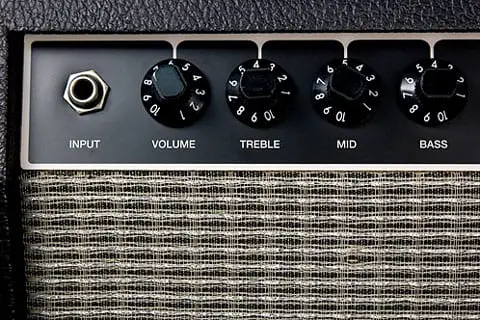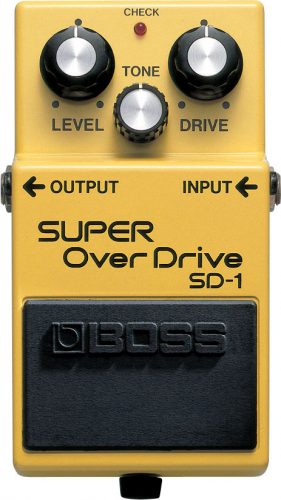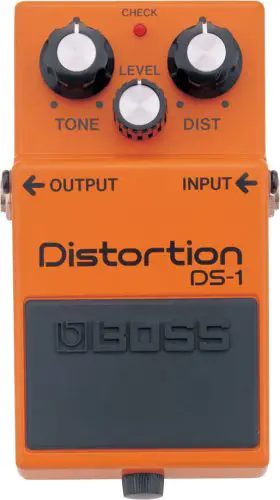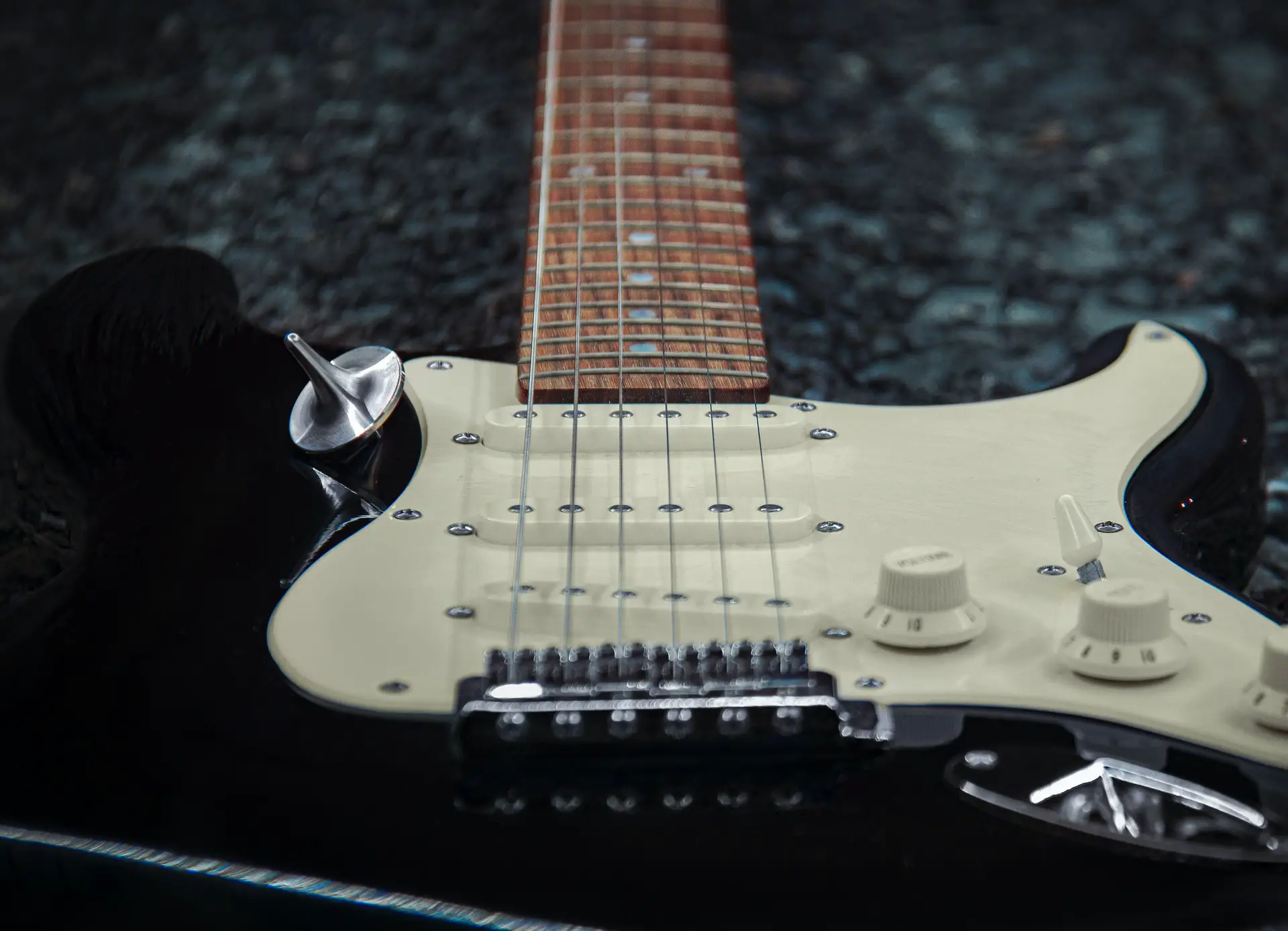Clean sound is a pure tone coming from an instrument without any sound effects.
Whereas dirty sound is distorted with fuzzy effects and sounds harsh – more suitable for rock and metal songs.
When I started playing electric guitar, I used to hear Youtubers saying the word ‘dirty’ many times and I was so confused – even more if they start mentioning terms like ‘gain’, ‘overdrive’ and ‘distortion’
In this quick article, I am going to extensively discuss dirty sounds – what is it, how to achieve it and also discuss the different terms around dirty sounds like gain and overdrive.
Here are content:
- Clean Vs Dirty Guitar Sound
- What is it
- How to achieve
- Best amp settings
- Suitable genre
- Overdrive Vs Distortion Vs Fuzz
- Getting dirty distortion without pedal
Clean Vs Dirty Guitar Sound
| Clean Sound | Dirty Sound | |
| What is it | Pure tone | Fuzzy distorted tone |
| How to achieve | Natural or amp | Gain pedal or amp |
| Best amp settings | Low gain, low mid | High gain, high mid |
| Suitable genre | Acoustic / Classical | Rock / Metal |
What Is It: Clean Vs Dirty Sound
Clean sound is a pure tone from an instrument without effects. Whereas dirty sound is distorted sound with added effects that sound fuzzy and harsh.
Traditionally, clean sounds are not as powerful – they can still be played properly according to the amp’s power rating.
Whereas dirty distorted sounds were created when the volume is cranked up till the amp doesn’t support it anymore – resulting in harsh, fuzzy and distorted sound.
I said traditionally, because that’s how distorted sound effects were created. A tube amp is used and the volume is cranked way up – to the point where the sound is distorted. This sounded great but it had to be loud.
Nowadays, modern amps like a solid state amp can emulate the distorted sound without being too loud and so can pedals.
How To Achieve: Clean Vs Dirty Sound
You can get a clean sound by playing your guitar unplugged or adjusting the amp settings with lower mid, higher treble and using the bridge pickup.
On the other hand, you can get dirty sound by using gain pedals like a distortion pedal or adjusting the amp settings with higher mid, lower treble and higher gain.
You can also switch to the overdrive channel if your amp supports it.
Traditionally, the only way to achieve a dirty sound is to crank up the volume of your tube amp till the voice breaks and becomes distorted. This sounded great but you had to be extremely loud.
Nowadays, amp settings and a couple of pedals can give you a great sounding clean or dirty sound. Refer to below for my amp settings when playing clean sound and dirty sound. Your amp should have the same settings.
If you want a great dirty sound, getting a gain pedal is definitely the way to go. You can look for any gain pedal like overdrive, distortion or fuzz pedal. They will each give you a dirty sound with different intensity.
I will cover their differences later in this article.
Best Guitar Amp Settings: Clean Vs Dirty Sound
Amp settings for clean sound:
- Lower mid
- Higher treble
- Lower gain (volume)
- Higher master volume (or guitar volume knob)
- Use bridge pickup
In some amps, gain is labeled as ‘volume’ and overall volume is labeled as ‘master’. Keep in mind these differences.
To have a great clean sound you need to lower the gain (AKA Volume) and up the overall volume (AKA master volume or the volume knob on your guitar).
Bridge pickup will also give you a brighter note – that’s suitable for clean sound. You can also use neck pickup for a more dull and warm clean note (based on the song).
Amp settings for dirty distorted sound:
- Max mid
- Lower treble
- Higher gain (volume)
- Lower master volume (or guitar volume knob)
- Use neck pickup
If you don’t have a pedal or your amp only offers a single channel, then the above settings is all you can do.
However, if your amp has 2 or more channels, you can easily switch the channel (with a button) into the channel for dirty – and this will give you a dirty sound.
Typically, guitar amps have 2 channels – 1 for ‘clean’ channel to provide clean sound and another channel for dirty channel to provide dirty sound.
You can still use the settings I provided above with your overdrive channel. They should sound pretty good and dirty.

Amp settings control. Volume knob usually means gain – this might be different for the ‘master volume’ which means the loudness.
Amp settings for distortion / overdrive pedals:
When using any gain pedal like distortion, overdrive or fuzz, you need to make your amp sound as clean as possible – let the sound effects come from the pedal.
The settings depend on the pedal you have. I recommend setting every EQ knob to 12 O’clock on your amp and switching to the clean channel. Then try out the sound with the pedal and make your adjustments after that.
Generally for a great dirty sound, we want more mids, more gains (volume) and less treble.
Suitable Genre: Clean Vs Dirty Sound
Clean sound is great for acoustic songs whereas dirty sound is great for rock, metal and even jazz.
When playing with an electric guitar, the clean tone sounds similar to an acoustic guitar. So it’s really suitable for fingerpicking, acoustic songs or if you even want to sing along.
Whereas dirty sound is great for rock and metal songs with those catchy distorted riffs and solos.
Overdrive Vs Distortion Vs Fuzz: The Differences
Overdrive, distortion and fuzz pedals are different types of gain pedals. They are used to make your tone sound dirty – but with different intensity.
Overdrive pedal is the least intense, followed by distortion and fuzz pedal (the most intense)
Overdrive pedal is the least intense gain pedal – they distort sound by emulating how a traditional tube amp will distort sound when pushed beyond its power rating limit.
Unlike traditional tube amps, an overdrive pedal can give you distorted sound without having to crank up any volume.

Boss Overdrive Pedal
Distortion pedal provides a more intense distortion than an overdrive pedal but less than a fuzz pedal.
You need to have a clean sound setting on your amp to use the distortion pedal. This is the most popular gain pedal for electric guitars.
I personally have been using the Boss DS-1 distortion pedal for a while now. They sound great and relatively cheap at $50. Check it out if you are interested.

Boss Distortion Pedal
Fuzz pedal is the most intense gain pedal and will make the sound extremely harsh and dirty. Fuzz pedal is suitable for heavy metal and the least common pedal (among the 3 gain pedals).
I recommend getting a distortion pedal first (if you can only get one). In my opinion, an overdrive pedal does not have enough distortion and can easily be emulated by adjusting your amp settings (higher mid, lower treble and higher gain).
Whereas fuzz pedal is too intense – it’s only suitable for specific music genres. If you like metal, then this could be your go to (not for most people though).
Getting Dirty Distortion Without Pedal (Only Amp): Possible?
Getting dirty distortion without any pedal (only with amp) is possible – even if your amp only has a single channel.
The trick is to have maximum mid, lower treble, higher gain and lower master volume. This could distort the sound enough for you to practice.
If you are looking to perform or play more seriously, then I recommend getting a distortion pedal. It costs about $50 and will give you great sound.
Though it is possible to get distortion effects purely from the amp, the result won’t be as intense. You cannot play the more intense riffs from heavy rock / metal.
My recommended gain pedals:





